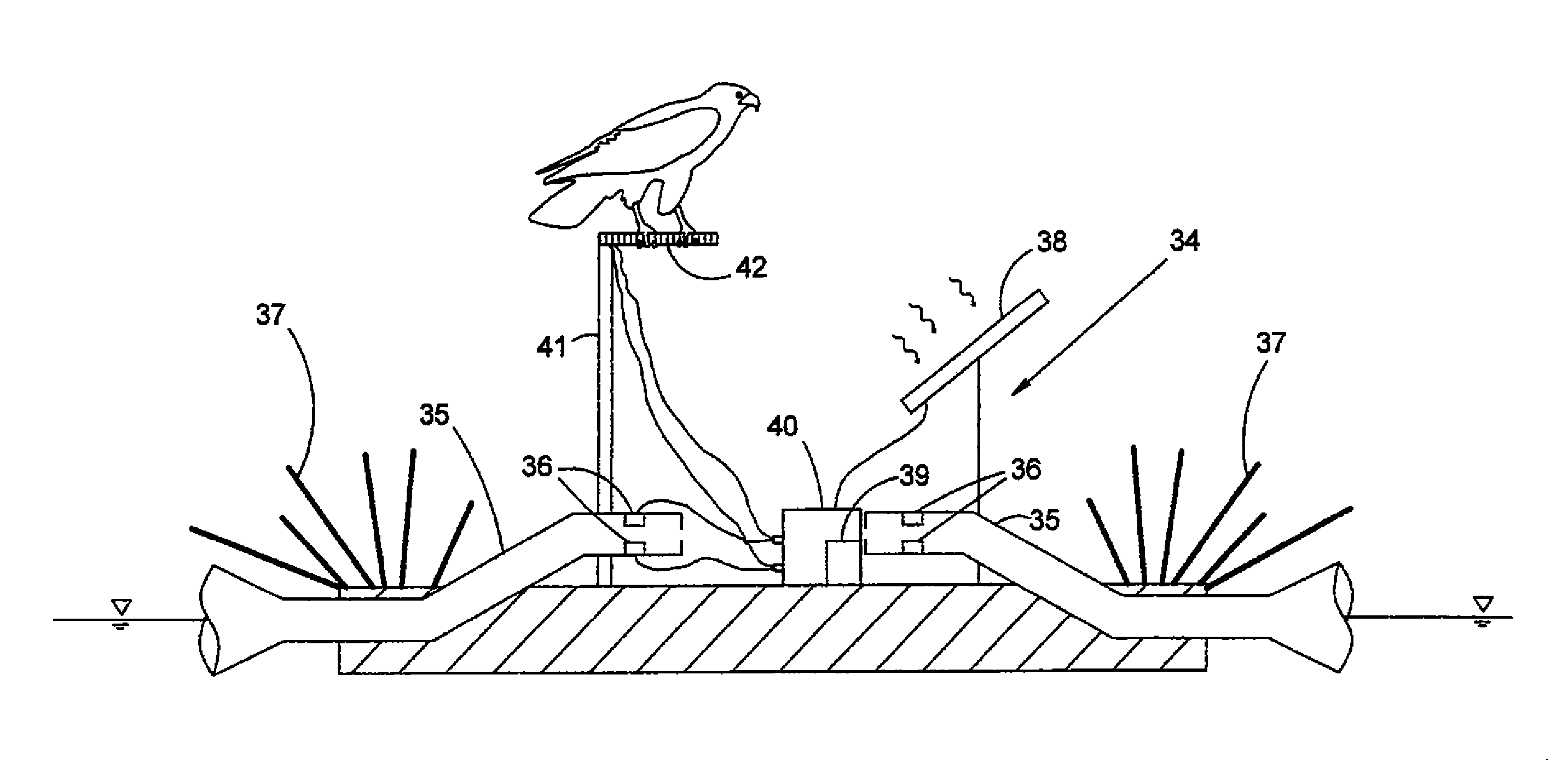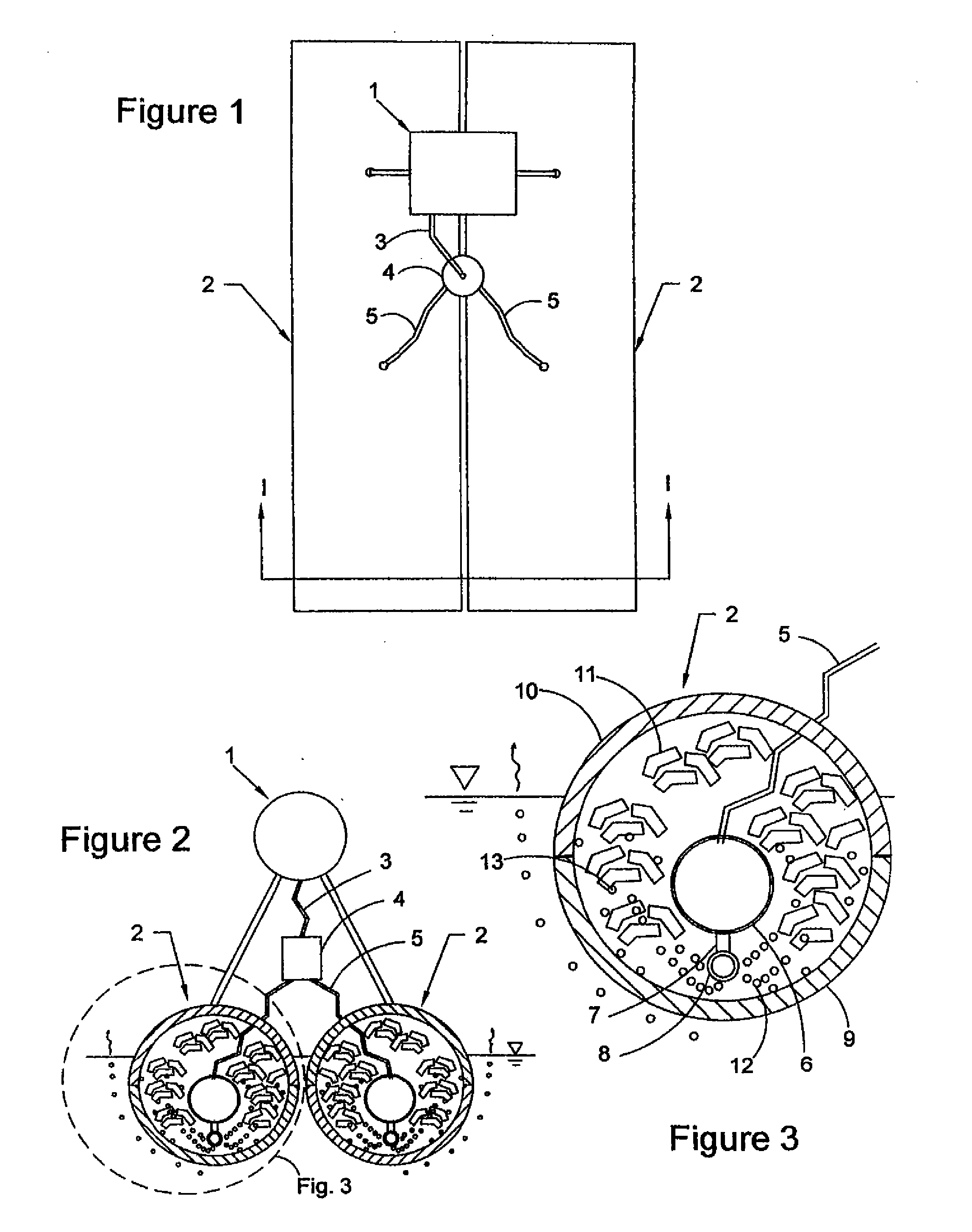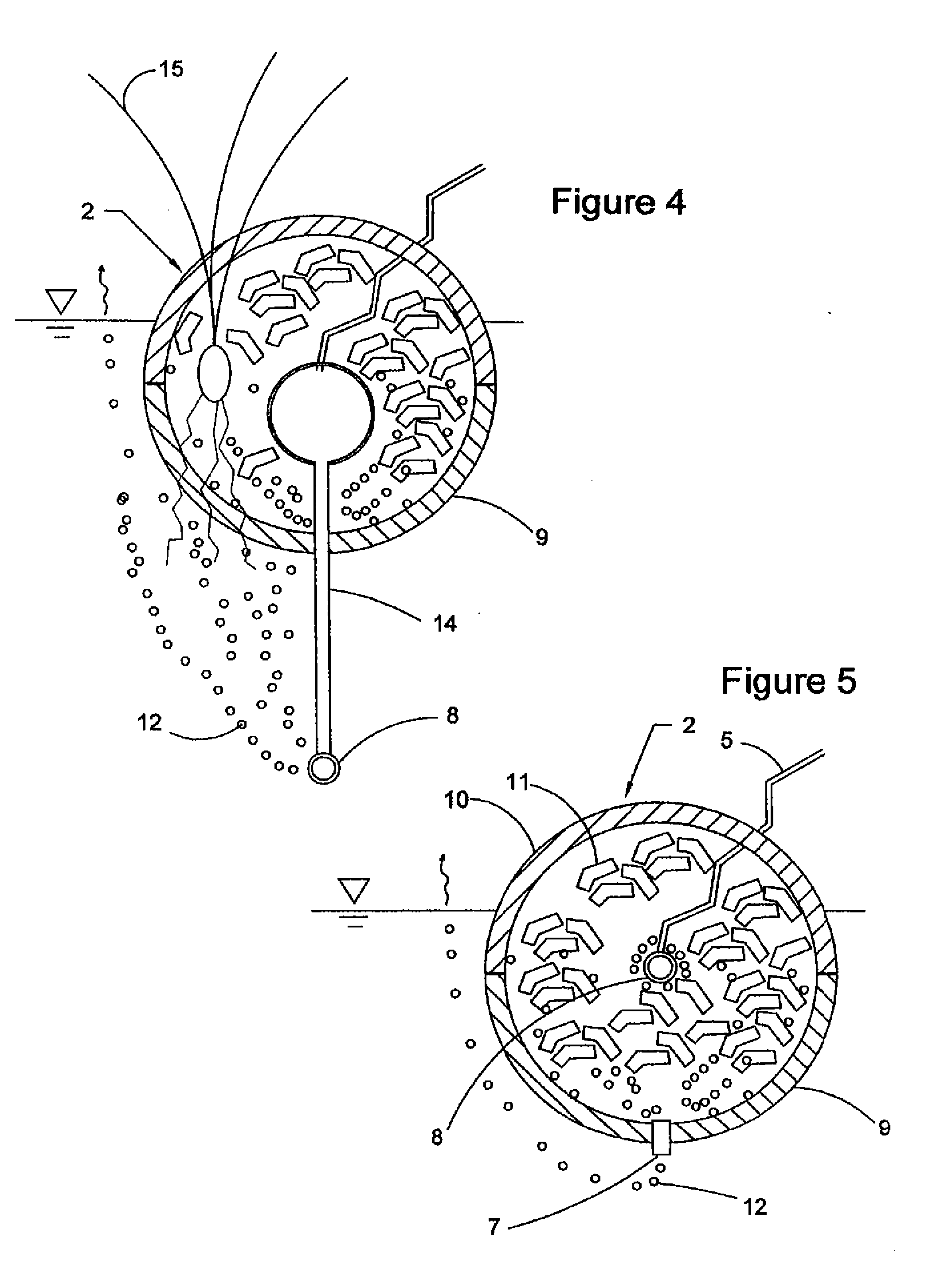Renewably buoyant, self-protective floating habitat
a floating habitat, self-protective technology, applied in the field of floating habitats, can solve the problems of increasing land mass and corresponding decrease in water volume, reducing aesthetic appearance, killing fish and other organisms, etc., and achieve the effect of improving the appearance and optimizing the nesting habita
- Summary
- Abstract
- Description
- Claims
- Application Information
AI Technical Summary
Benefits of technology
Problems solved by technology
Method used
Image
Examples
first embodiment
[0117]The floating habitat of the present invention is equipped with components that supply pressurized air to the submerged portions of the structure in order to increase the overall buoyancy of the structure. There are several alternative configurations for the air supply system. the self-pressurized floating habitat system is shown in top view in FIG. 1. A compressed air source 1 is shown mounted on top of flotation units 2. Although the drawing depicts the use of two flotation units 2, any number may be used, depending on the selected size of each flotation unit 2 and the required buoyancy and overall size of the floating habitat. Compressed air is produced by the compressed air source 1, pumped through the main supply hose 3 to the distribution valve 4, and then to the individual supply hoses 5.
[0118]FIG. 2 is a section view taken at section I-I of FIG. 1, and it shows the compressed air source 1, the flotation units 2, the main supply hose 3, the distribution valve 4, and an i...
second embodiment
[0124]a flotation unit 2 is shown in cross section in FIG. 4. In this embodiment, an extension tube 14 is used to position the diffusing manifold 8 beneath the flotation unit 2. Excess air is released through the diffusing manifold 8 into the water body in which the structure is floating. The released air bubbles 12 rise through the water body, where a first portion of the bubbles 12 dissolves into the water, a second portion adheres to the roots of aquatic plants 15 that extend through the bottom mesh 9, and the remainder of the bubbles is dispersed as described for FIG. 3. An advantage of this “extended manifold” embodiment is that it provides a means for increasing the dissolved air concentration in the water body, especially in the vicinity of the structure.
third embodiment
[0125]a flotation unit 2 is shown in cross section in FIG. 5. In this embodiment, bottom cover 9 and top cover 10 are made of impermeable materials so that they cannot be penetrated by plants, air bubbles, or water. Air enters the flotation unit 2 through an individual supply hose 5 and is released through a diffusing manifold 8, causing the internal pressure of the flotation unit 2 to increase. When the pressure increases to the opening pressure of the relief valve 7, excess air is released through the relief valve 7 to the water body in the form of air bubbles 12. This embodiment may be advantageous for applications where plant growth on the structure is not desired.
[0126]Three alternative embodiments of the compressed air source 1 are shown in FIGS. 6, 7, 8 and 9. The first preferred embodiment of the compressed air source 1 shown in FIG. 6 is a wind-powered compressor 16. A second preferred embodiment of the compressed air source 1 is the photoelectric-compressor system 17 shown...
PUM
 Login to View More
Login to View More Abstract
Description
Claims
Application Information
 Login to View More
Login to View More - R&D
- Intellectual Property
- Life Sciences
- Materials
- Tech Scout
- Unparalleled Data Quality
- Higher Quality Content
- 60% Fewer Hallucinations
Browse by: Latest US Patents, China's latest patents, Technical Efficacy Thesaurus, Application Domain, Technology Topic, Popular Technical Reports.
© 2025 PatSnap. All rights reserved.Legal|Privacy policy|Modern Slavery Act Transparency Statement|Sitemap|About US| Contact US: help@patsnap.com



